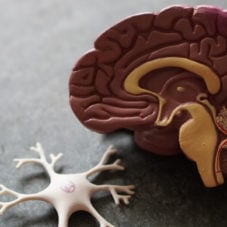Live Cultures
The Best Time To Take Live Cultures For Maximum Effectiveness
We get these questions from our customers on the daily – when’s the best time to take live cultures? Is it in the morning, or maybe after lunch? Should I take it with food or not?
These questions also seem to divide live culture manufacturers more than anything else. There’s a lot of conflicting advice and information, leaving even more people confused. It really shouldn’t be like this though.
Today, you’ll finally get the right answer – read on for our science-backed take on when to take live cultures.
When Is The Best Time To Take Live Cultures?
We’ll get straight to the point – the time of day isn’t important. While we do recommend our customers take their live culture supplements in the morning, it’s only because it’s easier to form a routine this way and not forget to take them. However, if you prefer to take them at any other time of day, then that’s perfectly fine as well!
That being said, when taking live cultures (of good bacteria) it’s important to make sure they actually reach their destination – the large intestine – alive! The ‘alive’ part is key. Taking live cultures is useless if all the good bacteria dies on the journey!
Keep in mind, the average adult’s gastrointestinal tract is almost 30 feet long, with the large intestine occupying the last 5 feet. That’s literally a lot of ground to cover for these microorganisms, so it’s extremely important they survive.
Stomach acidity
Many companies suggest taking their live cultures in the morning – on an empty stomach. But this isn’t really great advice. After fasting throughout the night, our stomach’s pH levels are at its most acidic, ranging from around pH 0.8 to 2. The more acidic your stomach is, the higher the probability it’s going to kill off the bacteria!
After a meal, however, gastric pH levels will rise to between pH 4 and 7, meaning the stomach is much less acidic, so there’s less chance of the bacteria dying. Also, the digestive enzymes released when we eat ensures the stomach empties more quickly.

Take live cultures with food
With lower gastric acidity after a meal, this is therefore the best time to take live cultures to ensure the bacteria’s survival. It doesn’t matter if you take it at breakfast, lunch, or dinner as long as it’s taken with food.
A 2011 study showed that live cultures taken within 30 minutes of a meal survived in significantly higher numbers than those given more than 30 minutes after a meal. The study also showed that more bacteria survived when taken with food than when they were taken with water or apple juice.
The authors of the study went on to say that it was the fat content of the meal that was important for the survival of the live cultures. So, try to have a little fat in your meal that you take your live cultures with (1).
What To Look For In A Live Culture Supplement?
So, not all live culture supplements are equal. It’s important to know what to look for so you’re getting your money’s worth and keeping your gut happy, too.
Type of capsule
All reputable live culture companies should use enteric-coated or delayed-release capsules. These capsules help ensure that the bacteria make it through the stomach acid alive.
At Intelligent Labs, we use delayed-release capsules for our live cultures. However, it’s important to mention that no company can guarantee that these will work perfectly every time. So, because we want to ensure that the minimum of 50 billion CFU (colony forming units) of live cultures in each capsule reaches your gut alive, we suggest taking them with food.
Live culture strains and sub-strains
There’s another thing that’s more important than looking for delayed-release or enteric-coated capsules. Make sure that whichever live culture brand you are using lists the sub-strains of bacteria inside the capsule. Just listing a strain should be a big warning sign as to the quality of the live cultures.
For the most common live culture strain – Lactobacillus acidophilus – we use the sub-strain La-14*. This is a well-researched sub-strain that we’ve chosen for its unique health benefits and its ability to survive stomach and bile acids.
*The other sub-strain in Intelligent Labs Live Cultures are Lactobacillus casei LC-11, Lactobacillus paracasei Lpc-37, Lactobacillus plantarum Lp-115 rhamnosus Lr-32, Lactobacillus lactis Li-23, Bifidobacterium bifidum Bb-06, Bifidobacterium breve Bb-03, Bifidobacterium lactis Bi-04, and Bifidobacterium longum BI-05.
When it comes to live culture supplements, it’s important to avoid generic strains. Here’s why:
Simply listing a strain on the label such as Lactobacillus acidophilus with no sub-strain is a bit like saying, “I have a dog.” OK, so you have a dog. But what type is it? A German Shepherd is obviously different from a Miniature Pinscher. Just as those two breeds have different characteristics, so too are different sub-strains of the same bacterial strain.
If a manufacturer is listing only the strain (and no sub-strain), then it’s an indication that they’re using a cheap generic strain to save on cost. It’s a giant red flag since the health and survival properties of such generic strains are unknown.

Final Words On When To Take Live Cultures
To conclude, the best time to take live cultures would be with a meal. This creates the best possible environment for the good bacteria to arrive in your gut alive. However, if that’s not convenient for you, that’s okay. Intelligent Labs’ delayed-release live culture capsules and specially selected sub-strains are designed to survive acidic conditions. So, if you take our live culture supplement on an empty stomach, they will still work just fine!
References
- Tompkins TA1, Mainville I, Arcand Y. The impact of meals on a probiotic during transit through a model of the human upper gastrointestinal tract. Benef Microbes. 2011 Dec 1;2(4):295-303.




